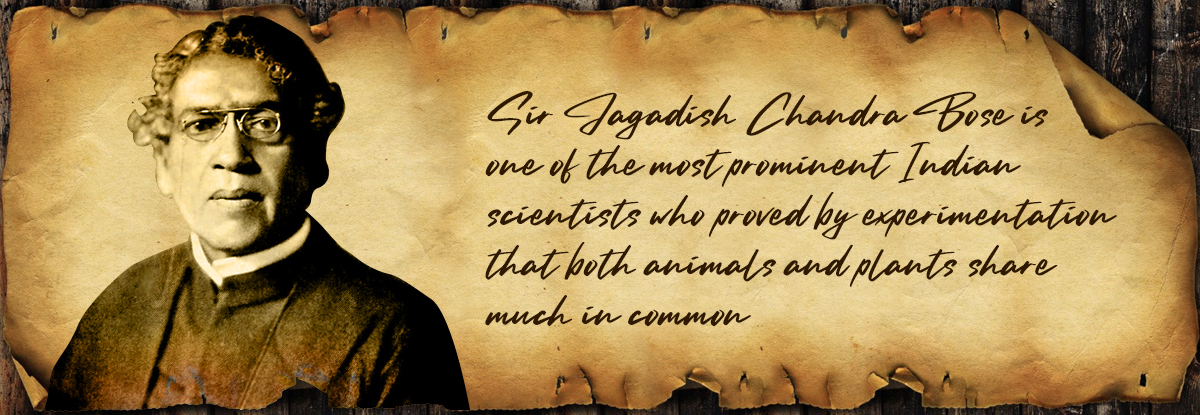JAGADISH CHANDRA BOSE
SIR JAGADISH CHANDRA BOSE IS ONE OF THE MOST PROMINENT INDIAN SCIENTISTS WHO PROVED BY EXPERIMENTATION THAT BOTH ANIMALS AND PLANTS SHARE MUCH IN COMMON. HE DEMONSTRATED THAT PLANTS ARE ALSO SENSITIVE TO HEAT, COLD, LIGHT, NOISE AND VARIOUS OTHER EXTERNAL STIMULI
Born in Mymensingh, Bengal Presidency, during the British Raj, Bose joined the Hare School in 1869 and later graduated from St Xavierʼs College, Kolkata. He then went to the University of London to read medicine, but could not pursue studies because of health problems. Instead, he conducted his research with the Nobel laureate Lord Rayleigh at Cambridge and returned to India. He then joined Presidency College as a Professor of Physics. Here, despite racial discrimination and a lack of funding and equipment, Bose carried on his scientific investigations.
He made remarkable progress in his research of remote wireless signalling and was the first to use semi-conductor junctions to detect radio signals. However, instead of trying to gain commercial benefit from this invention, Bose made his inventions public in order to allow others to further develop his research. Although he filed for a patent for one of his inventions because of peer pressure, his reluctance to patenting was well known. Bose subsequently made a number of pioneering discoveries in plant physiology.
Bose is now credited with inventing the first wireless detection device, discovering millimetre length electromagnetic waves, and being a pioneer in the field of biophysics. Many of his instruments are still on display and remain largely usable even now, over 100 years later. They include various antennas, polarisers, and waveguides, which remain in use in modern forms today.
Sir Nevill Mott, Nobel laureate in 1977 for his own contribution to solid-state electronics, remarked, “Sir J C Bose was at least 60 years ahead of his time. In fact, he had anticipated the existence of P-type and N-type semiconductors.”
Bose is considered the father of Bengali science fiction, publishing his first short story Niruddesher Kahini (The Story of the Missing One) in 1896, and Palatak Tuphan (Runaway Cyclone) in 1921.
The Bose Institute, founded by him in 1917, was the first interdisciplinary research centre in Asia. Bose served as its director from inception till his death. Amongst a slew of honours, including a Knighthood in 1917, the JBNSTS scholarship programme was begun to commemorate his birth centenary in 1958. The same year, a postage stamp with his portrait was issued by India. On November 30, 2016, he was the subject of a Google Doodle celebrating the 158th anniversary of his birth, and he has a crater on the moon named after him!

